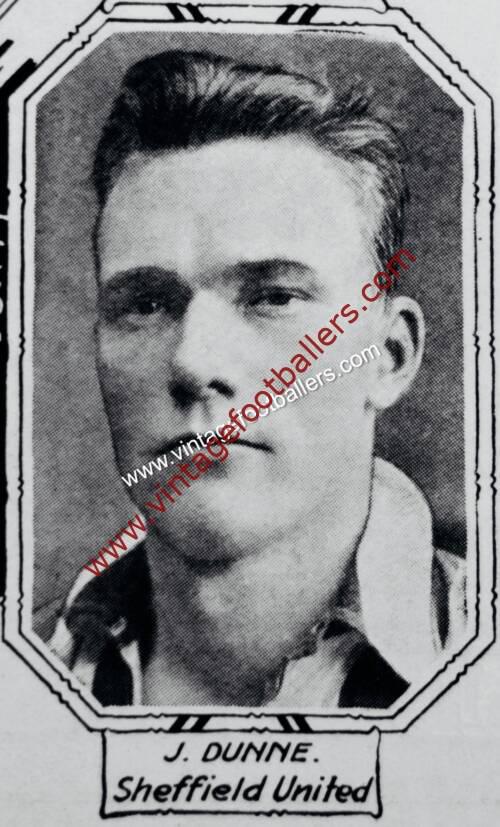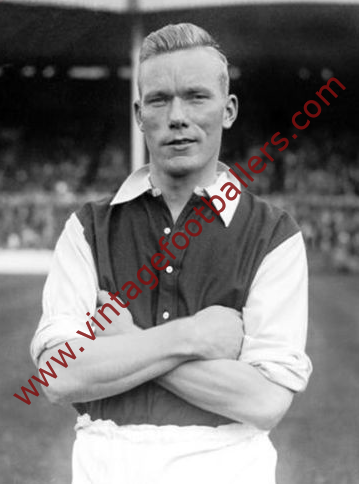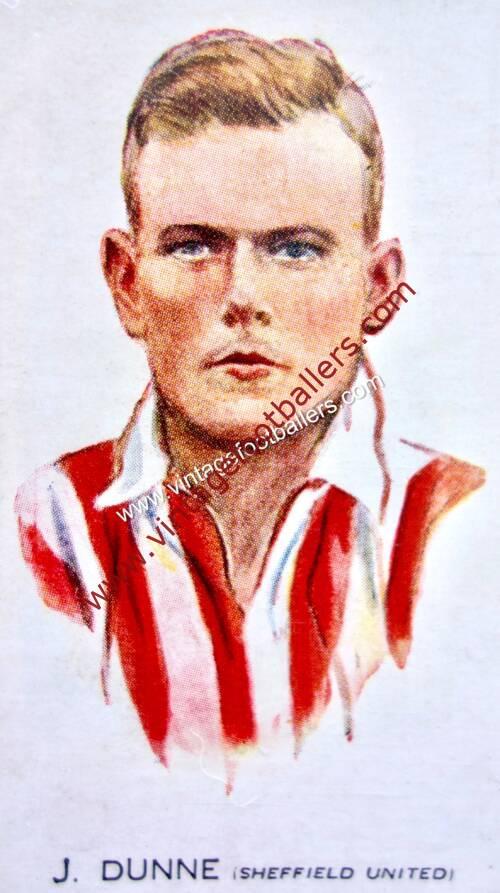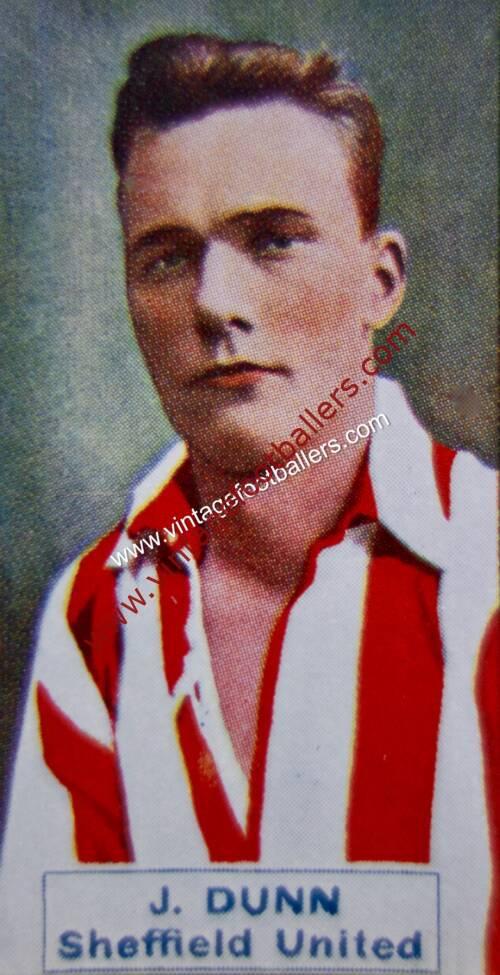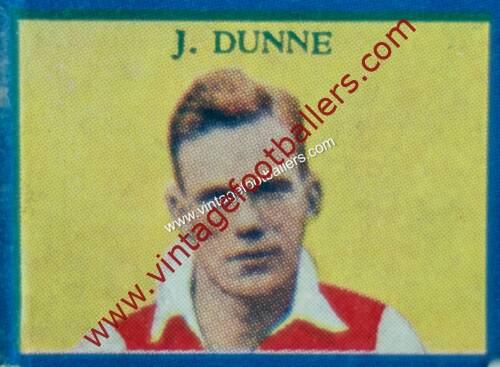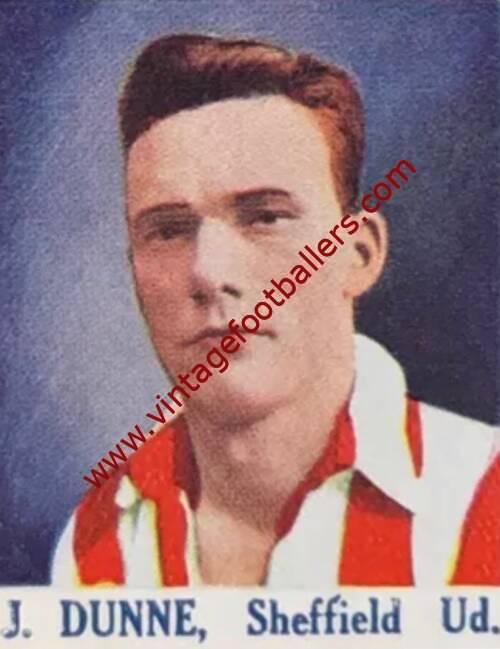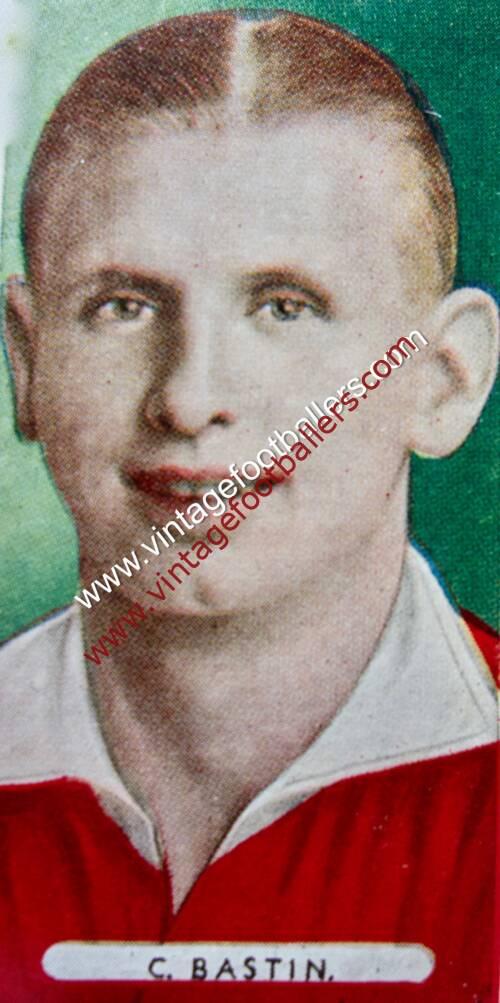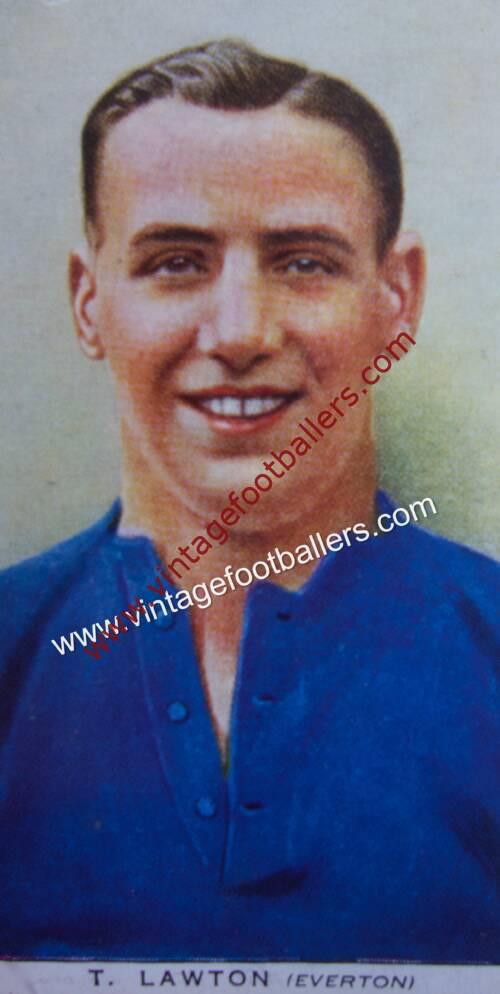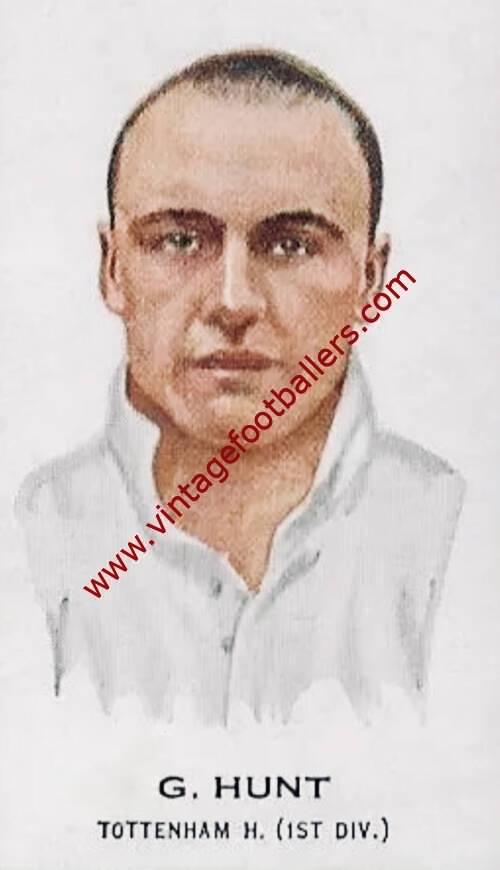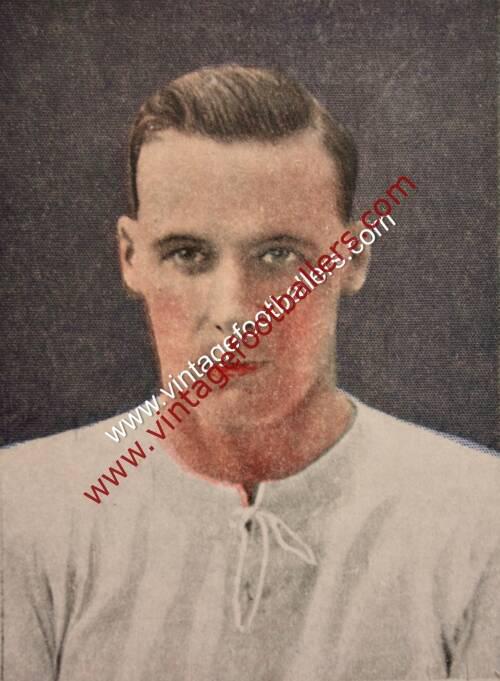Please choose your photo size from the drop down menu below.
If you wish your photo to be framed please select Yes.
Note: 16″x 20″not available in a frame.
Images can also be added to accessories. To order please follow these links
£8.95 – £49.95
Please choose your photo size from the drop down menu below.
If you wish your photo to be framed please select Yes.
Note: 16″x 20″not available in a frame.
Images can also be added to accessories. To order please follow these links
Born in the Ringsend area of Dublin, centre forward Jimmy Dunne played Gaelic football in his teens. He was imprisoned for IRA activities and went on hunger strike. It was during this time behind bars that he took to “soccer”, and on his release began playing junior football with a number of Dublin-based clubs including Park View in 1922 and Riverside Athletic in 1923, before joining Shamrock Rovers later in 1923. He left Rovers in October 1925 to sign with English Division Three (North) side New Brighton, making his Football League debut against Rochdale in early November, scoring in a 3-0 win, and he managed to find the net six more times in nine further matches prompting First Division club Sheffield United to buy him at the start of February 1926, only three months later.
Dunne’s initial progress at Bramall Lane was fairly slow, he made his debut in a 4-0 win over Arsenal in September 1926, and in his first three seasons he played in a total of just eleven League matches. He scored his first goal against Derby County in October 1927, but despite his lack of opportunity clearly the Irish FA’s selection committee were keeping an eye on his progress as he won his first cap for Ireland in a 2-1 defeat against Wales in Belfast the following February.
It was not until the 1929-30 season that Dunne showed what he was really capable of at the highest level. He found the net 36 times in the League and twice in the Cup, a total that included three hat-tricks and two four goal hauls in successive matches against West Ham United and Leicester City at the start of 1930, as he finished as the League’s top goalscorer. That same season he also made the breakthrough into the Irish Free State’s team, scoring twice on his debut in a 3-1 win over Belgium in May 1930.
The following season Dunne’s goalscoring continued unabated, as he scored 41 League goals (46 in all competitions). He remains the only Irishman to have topped forty goals in a season in the Football League. He scored all four goals in a win over Liverpool in April 1931 and netted five other hat-tricks. The following season he managed 35 goals but also a further record. Dunne holds the all-time record of consecutive goals scored at the elite level of English football: between 24th October 1931 and 1st January 1932, he scored in 12 matches in succession, a run that included the season’s only hat-trick in a 4-3 defeat to Middlesbrough. Dunne topped thirty goals for a third consecutive season in 1931-32, a feat matched only by Alan Shearer since.
He had also found his way back into the Ireland’s team, scoring in a 5-1 defeat by England in October 1930, and again the following March in a 3-2 defeat by Wales. This was the beginning of a run that saw four goals in four consecutive appearances – a feat matched just once before or since, by Willie Irvine in the mid-1960’s. So inspirational was Dunne’s form that he was awarded the Irish captaincy.
A highly versatile goalscorer, Dunne excelled at centre forward or inside forward, and was particularly adept with his head, indeed a hat-trick against Portsmouth in September 1930 were all headers. In early 1932 Arsenal offered £10,000 for Dunne’s signature, but the bid was rebuffed as Dunne stayed on at Bramall Lane for another season and a half, scoring another 28 goals in their 1932-33 campaign. Finally with The Depression biting hard on Sheffield United’s finances, after Dunne had scored a hat-trick in a 4-1 win over Chelsea they were forced to sell their star player to Arsenal for a reduced fee of £8,250 in September 1933 after 154 goals in 184 appearances for The Blades.
A first season total of nine League and three Cup goals helped Arsenal to clinch their second consecutive League title, as Sheffield United, undoubtedly missing their goalscoring talisman, suffered relegation. But the signing of Ted Drake in the summer of 1934 effectively ended Dunne’s Arsenal career, and he played just once as Arsenal again retained their League title. Sheffield United sought to re-sign their lost hero in February 1935, but Arsenal refused to release him. After just seven outings and a single goal in 1935-36, including an appearance in their FA Charity Shield defeat to Sheffield Wednesday, Dunne was finally allowed to leave Highbury, and he signed for Second Division club Southampton in July 1936 after 13 goals in 33 games for The Gunners.
Dunne stayed just one season at The Dell, finishing as top scorer with 14 goals from 37 appearances, scoring on his debut against Chesterfield. Despite the offer of a new contract, he left Southampton through the transfer “back-door” to the League of Ireland, returning to Shamrock Rovers as player-coach in June 1937. His influence was immediate, Rovers claiming consecutive League of Ireland titles and FAI Cup and League Shields during Dunne’s final five seasons as a player, Dunne scoring 52 goals in 87 appearances.
It was also whilst with Rovers that Dunne brought his international career to a close, making his fifteenth and final FAI appearance against Germany in May 1939. His record of twelve goals for the Irish Free State/Eire side still stands out in the record books, and his return of four goals in seven Ireland caps also stands up to scrutiny. He also represented The League of Ireland on six occasions.
Jimmy Dunne left Shamrock Rovers to become coach at Bohemians in 1942, before returning to Milltown in 1947. He died suddenly, aged just 44, in November 1949.
His two sons, Tommy and Jimmy, also played in the League of Ireland for St. Patrick’s Athletic. Tommy also played for Shamrock Rovers. Jimmy played for Torquay United and Fulham, and won one cap for the Republic of Ireland. His nephew, another Tommy Dunne, also played for Rovers and another nephew Christy Doyle, played for Shelbourne and Eire.
| Weight | N/A |
|---|
